Kayaking is so simple, you don’t need much to get out on the water. But you won’t get far without a paddle, so here’s a quick guide to what to look for in three kayaking essentials. You’ll need a buoyancy aid to wear while you kayak, and some way to get your kayak to the water on your car or with a trolley. Of course the best thing you can take along with you is a friend or two.
You can get a bit more involved and extend your paddling beyond sunny summer days with a paddle jacket and thermals, or a wetsuit, gloves and neoprene boots, or take a picnic along on your adventure in a drybag. Let’s keep it simple for now, with our three essentials accessories:
1
The big question when you’re buying a new paddle is, ‘what length?’ The length of paddle depends on what kind of kayak you’ll be using, and to some extent, personal preference. Generally speaking, the wider the kayak and the taller the paddler, the longer you’ll want the paddles to be.
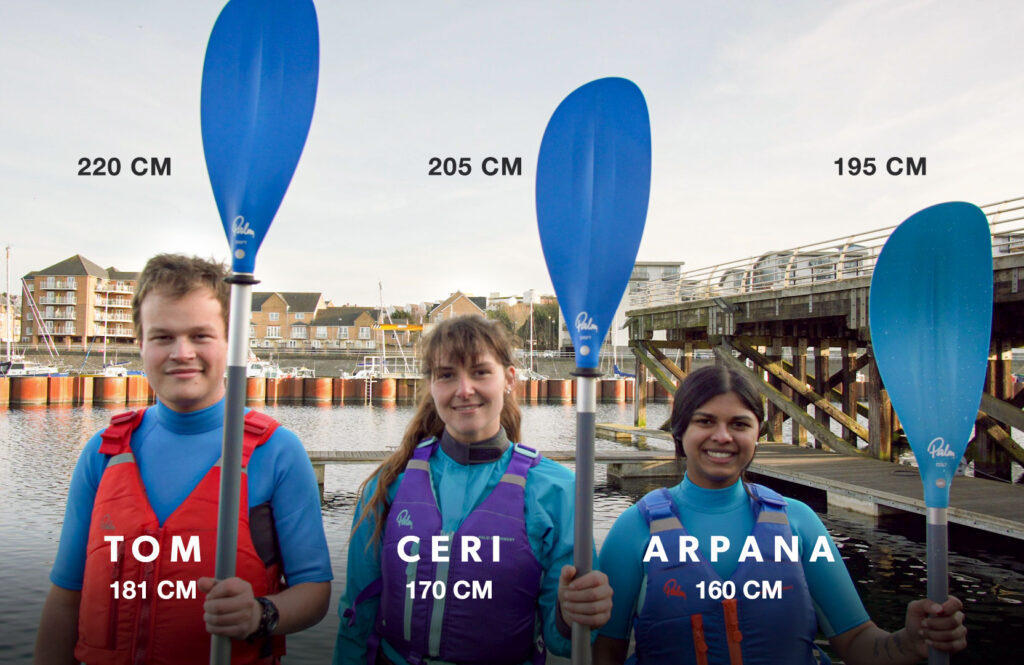
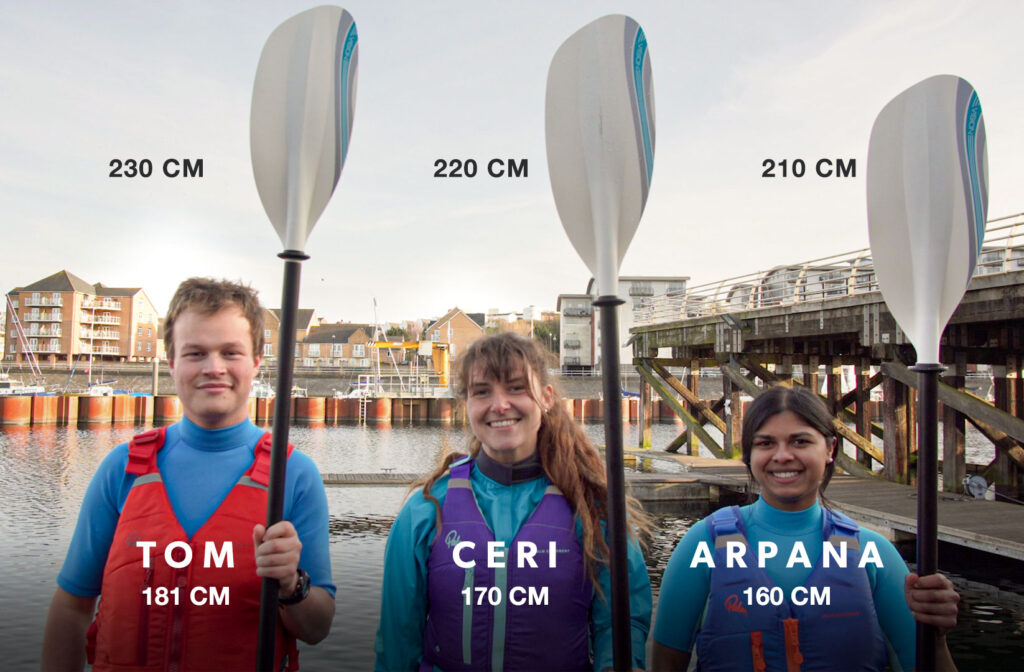
suggested paddle |
your height (cm) |
paddle length (cm) |
||
|---|---|---|---|---|
| Small adults & kids | Colt | < 165 | 185 – 195 | |
| General purpose | Drift | 172 – 185 172 – 185 > 185 |
205 – 215 215 – 220 220 – 225 |
|
| Long distances | Vision | 157 – 172 168 – 185 > 178 |
210 220 230 |
An adjustable paddle allows you to choose your blade angle and often your paddle length too, and since the paddle breaks down into two parts it’s easy to transport too. A two-piece paddle takes up much less space, they fit neatly in your car boot or can be stowed inside your kayak.
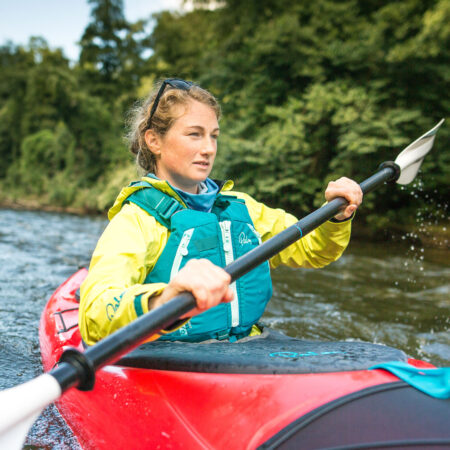

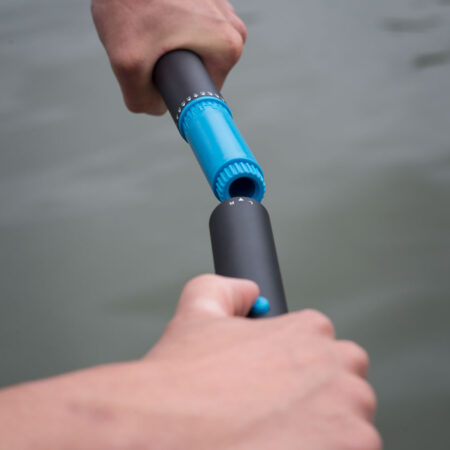





2
A buoyancy aid will help keep you safe out on the water, and give you the confidence to swim with extra float. A buoyancy aid is often called a personal floatation device (PFD). A buoyancy aid is easy to swim and paddle in. Unlike a life jacket, which will float you on your back, the foam on a buoyancy aid is evenly distributed so you can swim on your front and climb back on your kayak more easily. Wherever you paddle, wear a buoyancy aid that fits well and is made to meet safety standards.
The most important thing is that your buoyancy aid is comfortable and fits you well. You can try on a range of sizes at your local shop to see which suits you best. For the best fit:
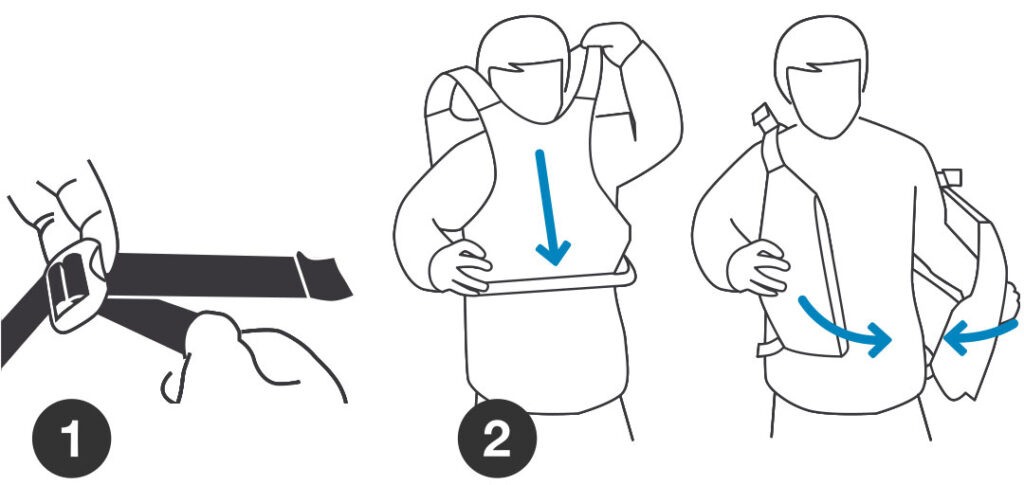
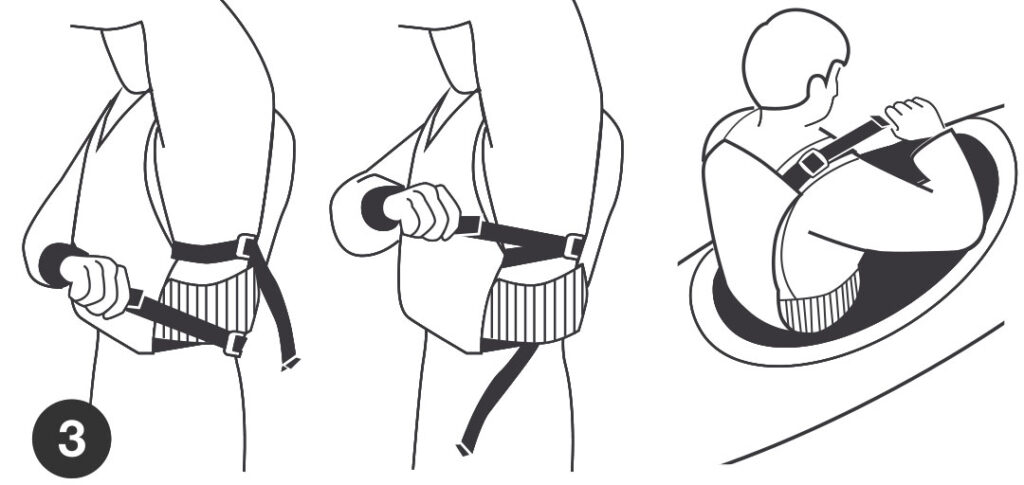
Sit-on-top kayaks and inflatables often have comfortable taller padded seats. To take full advantage of the support from your seat, a high back PFD like the Meander Highback fits perfectly out of the way. The mesh on the back also works great for ventilation, so it’s also popular with paddlers who are on the water in warm climates.
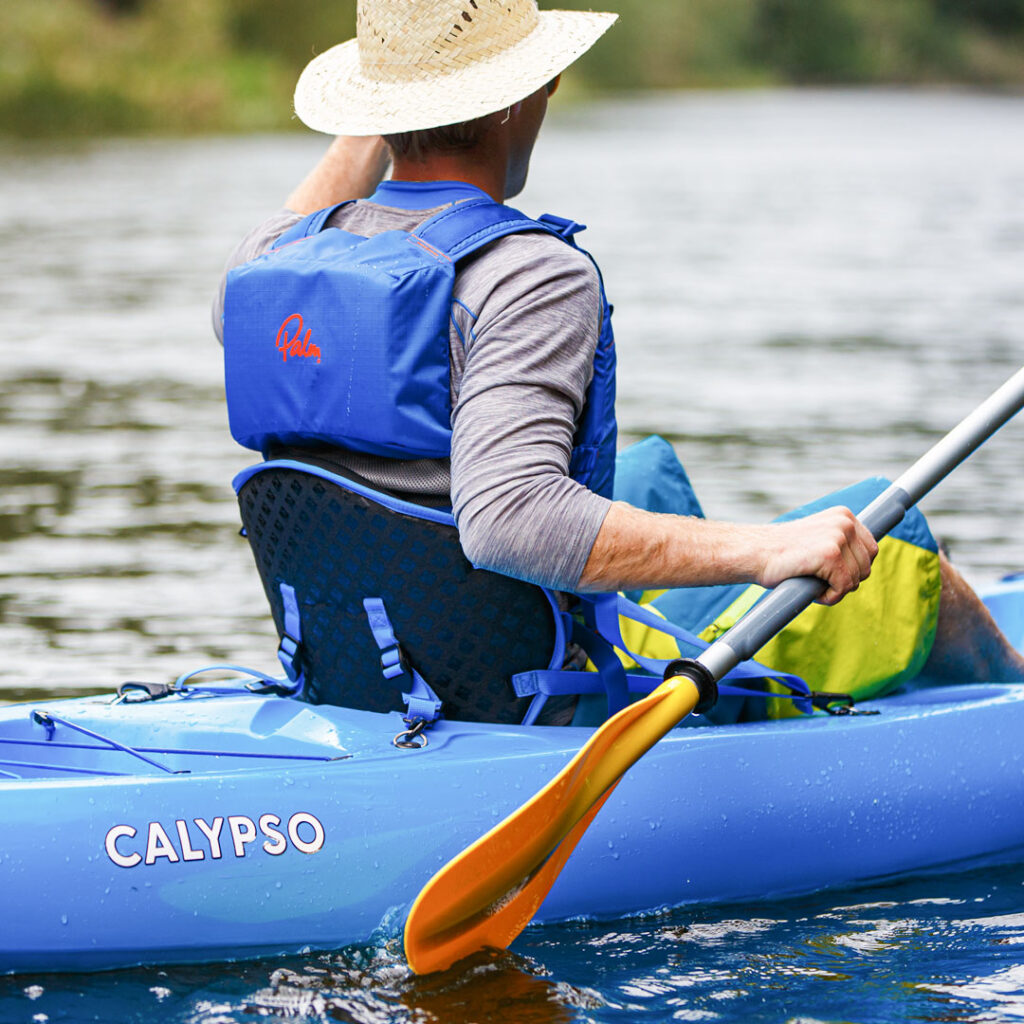
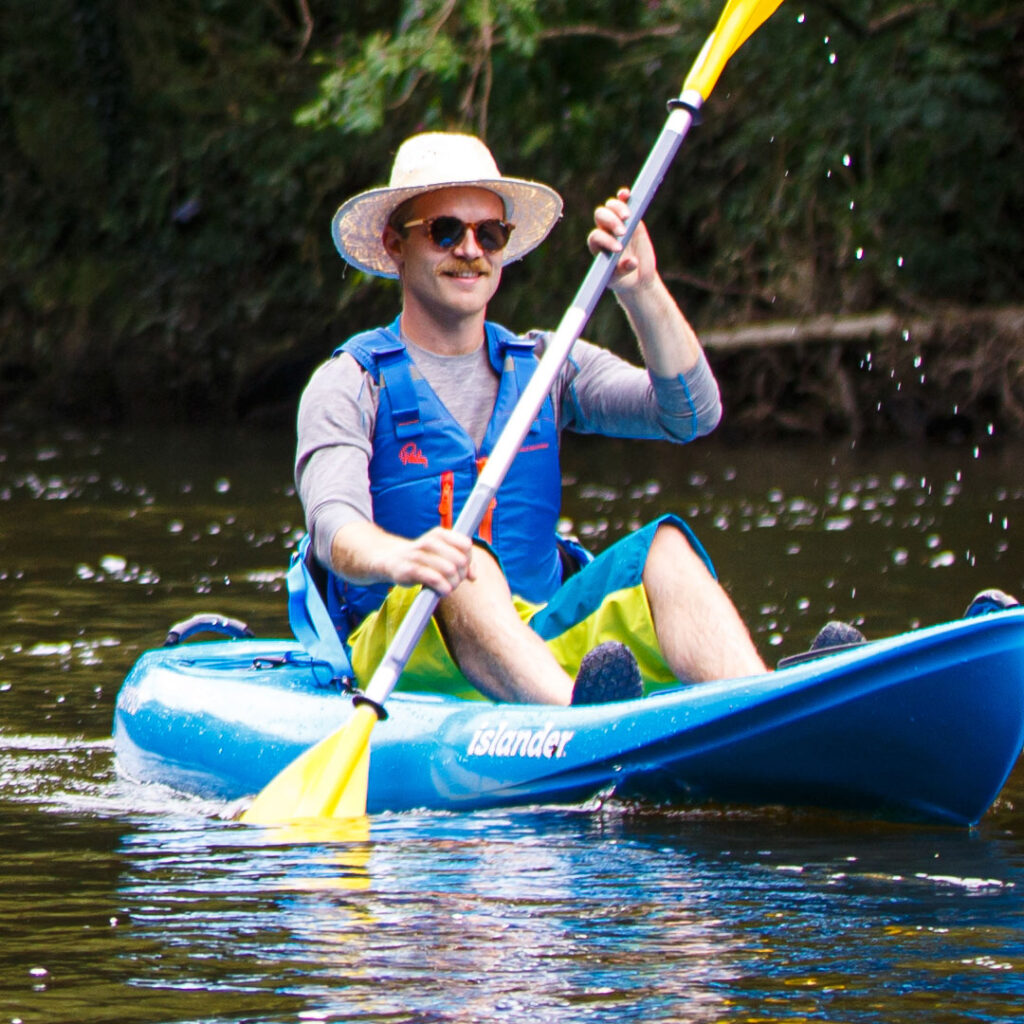
3
If you’re getting to the seaside, lake or river by car, you’ll need to strap your kayak down to your roof rack. Proper roof rack straps make the whole task a lot easier, with a buckle that grips the strap, you can tie your kayak down nice and tight.
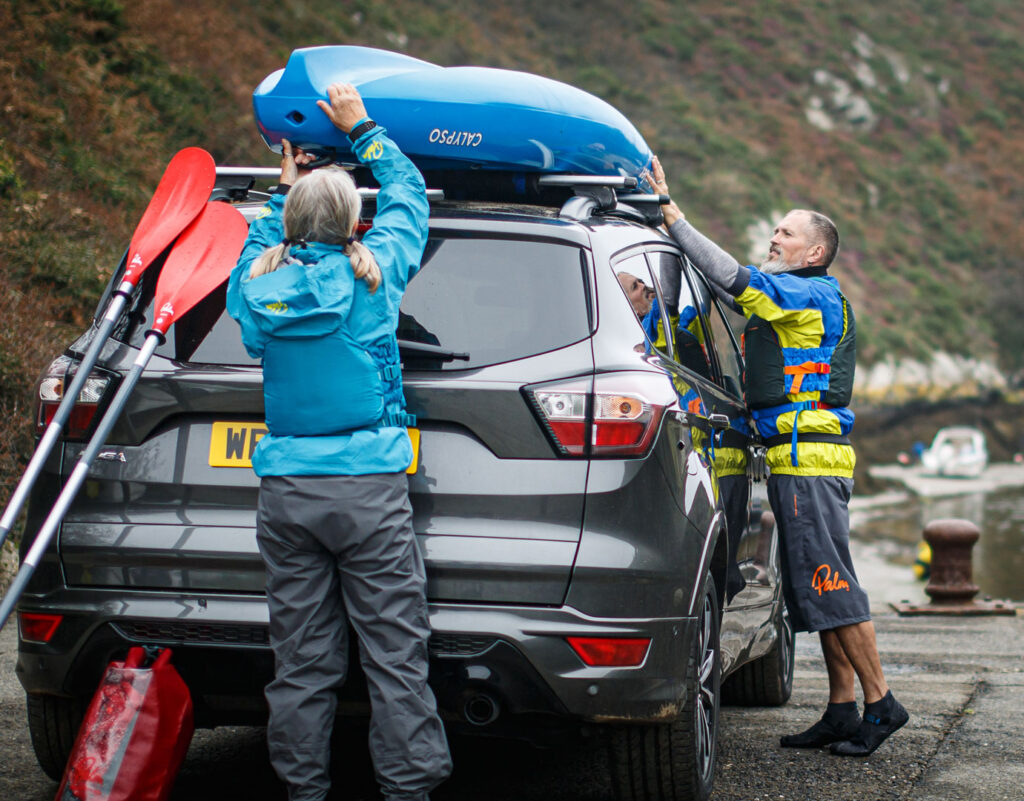
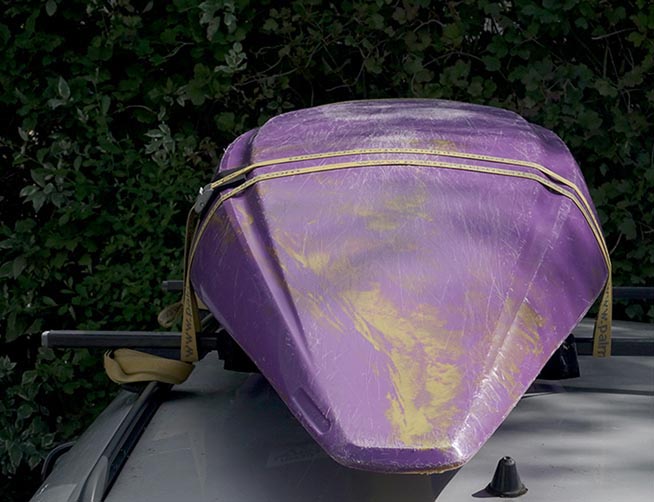
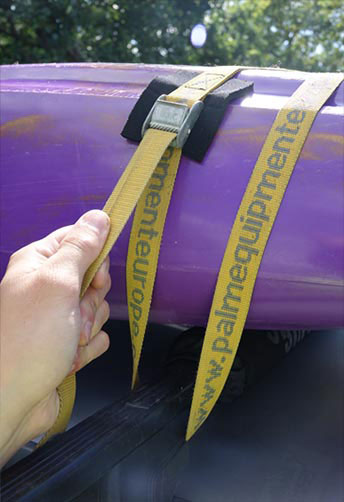
If you’re carrying longer boats on your roof, it will likely be longer than the roof of your car. As a precaution you may want to tie the front and/or rear ends of your kayaks to your car’s towing loop. If the boat sticks out by a metre or more, you’ll need to make it clearly visible by attaching something bright and obvious to the end. A brightly coloured empty drybag does the job nicely! For more tips on transporting your kayaks, check out the Palm blog.
That’s enough to get you started, check in at your local kayak shop to see and try on the latest paddling gear, or visit palmequipmenteurope.com to find all these products and more …